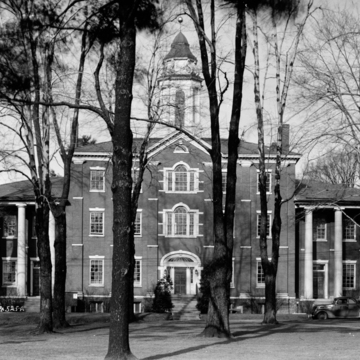The 540-acre campus of Allegheny College, a 2,000-student coeducational liberal arts college, contains over forty buildings designed by architects from Philadelphia, New York, Chicago, and Pittsburgh. The centerpiece, Bentley Hall, was designed in 1820–1821 by Alexander Temple and by Timothy Alden, who opened the college in 1817. The hall was named for the college's first major donor, Reverend William Bentley, a Unitarian minister of Salem, Massachusetts, who donated his library in 1819. The building's mixture of Federal and Greek Revival elements is charming and vibrant, with a cupola directly copied from an Asher Benjamin pattern book. The majority of the campus's buildings speak to that idiom. The three buildings constructed during the nineteenth century are red brick with the traditional styling of that time.
In the twentieth century, locally quarried sandstone was the preferred material for the Ford Memorial Chapel (1901, Charles W. Bolton) and Newton Observatory (1901, M. H. Church). Reis Hall, the former library (1901, Charles W. Bolton), is of brown Pompeiian brick in a Renaissance Revival style. Carnegie Hall (1915, Henry D. Whitfield) is constructed of buff brick similar to the buildings at Carnegie Mellon University in Pittsburgh (
AL43). From 1928 to 1941, halls northwest of Bentley were built in a colonial interpretation by noted college planner Jens Fredrick Larson and historicist architects Charles Stotz and Edward Stotz Jr. Not until midcentury did modernism take over campus designs. Between 1953 and 1964, half-a-dozen brick and concrete buildings were designed with flat roofs and recessed fixed windows. In the mid-1990s, postmodernism arrived with Steffee Hall of Life Sciences (1993, Ellenzweig and Associates) and Wise Athletic Center (1997, Hastings + Chivetta Architects). A campus master plan prepared by Celli Flynn Brennan


